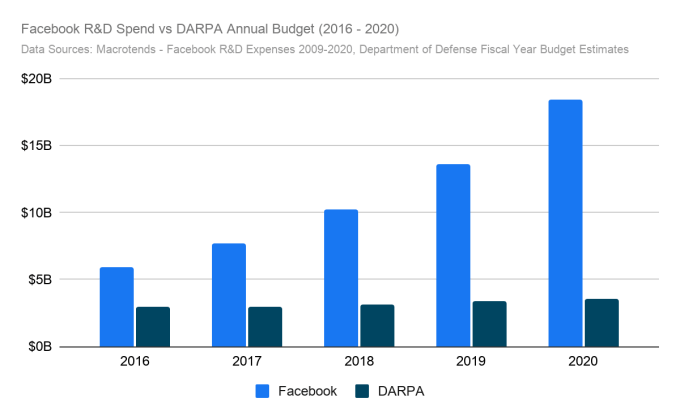- April 13, 2021
- by:
- in: Blog
ConsenSys, a key player in crypto and a major proponent of the Ethereum blockchain, has raised a $65 million funding round from J.P. Morgan, Mastercard, and UBS AG, as well as major blockchain companies Protocol Labs, the Maker Foundation, Fenbushi, The LAO and Alameda Research. Additional investors include CMT Digital and the Greater Bay Area Homeland Development
ConsenSys, a key player in crypto and a major proponent of the Ethereum blockchain, has raised a $65 million funding round from J.P. Morgan, Mastercard, and UBS AG, as well as major blockchain companies Protocol Labs, the Maker Foundation, Fenbushi, The LAO and Alameda Research. Additional investors include CMT Digital and the Greater Bay Area Homeland Development Fund. As well as fiat, several funds invested with Ethereum-based stablecoins, DAI and USDC, as consideration.
Sources told TechCrunch that this is an unpriced round because of the valuation risk, and the funding instrument is “full”, so the round is being closed now.
The fundraise looks like a highly strategic one, based around the idea that traditional institutions will need visibility into the increasingly influential world of ‘decentralized finance’ (DeFi) and the Web3 applications being developed on the Ethereum blockchain.
In a statement on the fundraise, ConsenSys said it has been through a “period of strategic evolution and growth”, but most outside observers would agree that this is that’s something of an understatement.
After a period of quite a lot of ‘creative disruption’ to put it mildly (at one point a couple of years ago, ConsenSys seemed to have everything from a VC fund, to an accelerator, to multiple startups under its wing), the company has restructured to form two main arms: ConsenSys, the core software business; and ConsenSys Mesh, the investment arm, incubator, and portfolio. It also acquired the Quorum product from J.P. Morgan which has given it a deeper bench into the enterprise blockchain ecosystem. This means it now has a very key product suite for the Etherum platform, including products such as Codefi, Diligence, Infura, MetaMask, Truffle, and Quorum.
This suite allows it to serve both public and private permissioned blockchain networks. It can also support Layer 2 Ethereum networks, as well as facilitate access to adjacent protocols like IPFS, Filecoin, and others. ConsenSys is also a major contributor to the Ethereum 2.0 project, for obvious reasons.
Commenting on the fundraise, Joseph Lubin, founder of ConsenSys and co-founder, Ethreum said in a statement: “When we set out to raise a round, it was important to us to patiently construct a diverse cap table, consistent with our belief that similar to how the web developed, the whole economy would join the revolutionaries on a next-generation protocol. ConsenSys’ software stack represents access to a new automated objective trust foundation enabled by decentralized protocols like Ethereum. We are proud to partner with preeminent financial firms alongside leading crypto companies to further converge the centralized and decentralized financial domains at this particularly exciting time of growth for ConsenSys and the entire industry.”
With financial institutions able to see, ‘in public’ DeFi happening on Ethereuem, because of the public chain, they can see how much of the financial system is gradually starting to merge with the blockchain world. So it’s becoming clearer what attracts these major institutions.
Mike Dargan, Head of Group Technology at UBS said: “Our investment in ConsenSys adds proven expertise in distributed ledger technology to our UBS Next portfolio.”
For MasterCard this appears to be not just a pure investment – Consensys has been working with it on a private permissioned network.
Raj Dhamodharan, executive vice president of digital asset and blockchain products and partnerships at Mastercard said: “Enterprise Ethereum is a key infrastructure on which we and our partners are building payment and non-payment applications to power the future of commerce… Our investment and partnership with ConsenSys helps us bring secure and performant Enterprise Ethereum capabilities to our customers.”
Colleen Sullivan, Co-Founder and CEO of CMT Digital said: “ConsenSys is the pioneer in bridging the gaps across traditional finance, centralized crypto, and DeFi, and more broadly, between Web 2.0 and Web 3.0. We are proud to participate in this funding round as the ConsenSys team continues to pave the way for global users — retail and institutional — to easily access the crypto ecosystem.”
TechCrunch understands that the fundraise was started around the time of the Quorum acquisition, last June. The $65 million round is in majority fiat currency as opposed to cryptocurrency and is an adjunct to the round done with JP Morgan last summer.
The presence of significant crypto players such as Maker Protocol Labs shows the significance of the fund-raise, beyond the simple transaction. The announcement also comes just ahead of the Coinbase IPO, which makes for interesting timing.
ConsenSys’ products have become highly significant in the world where developers, enterprises, and consumers meet blockchain and crypto. In its statement, the company claims MetaMask now has over three million monthly active users across mobile and desktop, a 3x increase in the last five or six months, it says. This is roughly the same amount of monthly active customers as Coinbase.
The ConsenSys announcement comes just ahead of the Coinbase IPO. While Coinbase is acting as an exchange to turn fiat into crypto and vice versa, it has also been getting into DeFi of late. Where there are also resemblances with ConsenSys, is that Coinbase, with 3 million users, is used as a wallet, and MetMask, which also has 3 million users, can also be used as a wallet. The comparison ends there, but it’s certainly interesting, given Coinbase’s $100 billion valuation.
As Jeremy Millar, Chief Development Officer, told me: “Coinbase has pioneered an exchange, in one of the world’s was regulated financial markets, the US. And it has helped drive significant interest in the space. We enjoy a very positive relationship with Coinbase, trying to further enable the ecosystem and adoption of the technology.”
The background to this raise is that a lot of early-stage blockchain and crypto companies have been raising a lot of money recently, but much of this has been through crypto investment firms. Only a handful of Silicon Valley VCs are backing blockchain, such as Andreessen Horowitz.
What’s interesting about this announcement is that these incumbent financial giants are not only taking an interest, but working alongside ConsenSys to both invest and build products on Ethereum.
It’s ConsenSys’ view that every payment service provider, banks will need this financial infrastructure in the future, especially for DeFI.
Given there is roughly $43 billion collateralized in DeFi, it’s increasingly the case that major investors are involved, and there are increasingly higher returns than traditional yield and bond or bond yields.
The moves by Central Banks into digital currencies is also forcing companies and governments to realize digital currency, and the ‘blockchain rails’ on which it runs, is here to stay. This is what is suggested by the Greater Bay Area Homeland Development Fund’s (a Shenzhen / Hong Kong joint partnership) decision to get involved.
Another aspect of this story is that ConsenSys is sitting on some extremely powerful products. Consensys has six products that serve three different types of people.
Service developers who are building on Ethereum are using Truffle to develop smart contracts. Users joining the NFT hype are using MetaMask underneath it all.
The MetaMask wallet allows users to swap one token for another. This has proved quite lucrative for ConsenSys, which says it has resulted in $1.8 billion in volume in decentralized exchange use. ConsenSys takes a 0.875 percent cut on every swap that it serves.
And institutions are using Consensys’ products. The company says more than 150,000 developers use Infura’s APIs, and 4.5 million developers create and deploy smart contracts using Truffle, while its Protocols group — developer of Hyperledger Besu and ConsenSys Quorum — are building Central Bank Digital Currencies (CBDCs) for six central banks, says Consensys.
Consensys is also making hay with the NFT boom. Developers are using Consensys products for the nodes and infrastructure on Ethereum which stores the NFT files.
Consensys is also riding two waves. One is the developer eave and the other is the financial system wave.
As a spokesperson said: “Where the interest in money and invention started happening was on public networks like Ethereum. So we really believe that these are converging and they will continue to, and every one of our products offers public main net compatibility because we think this is the future.”
Millar added: “If we want to help the world adopt the technology we need to meet it at its adoption point, which for many large enterprises means inside the firewall first. But similarly, we think, just like the public Internet, the real value – the disruptive value – changes the ability to do this on a broader permissionless basis, especially when you have sufficient privacy and authentication available.”












